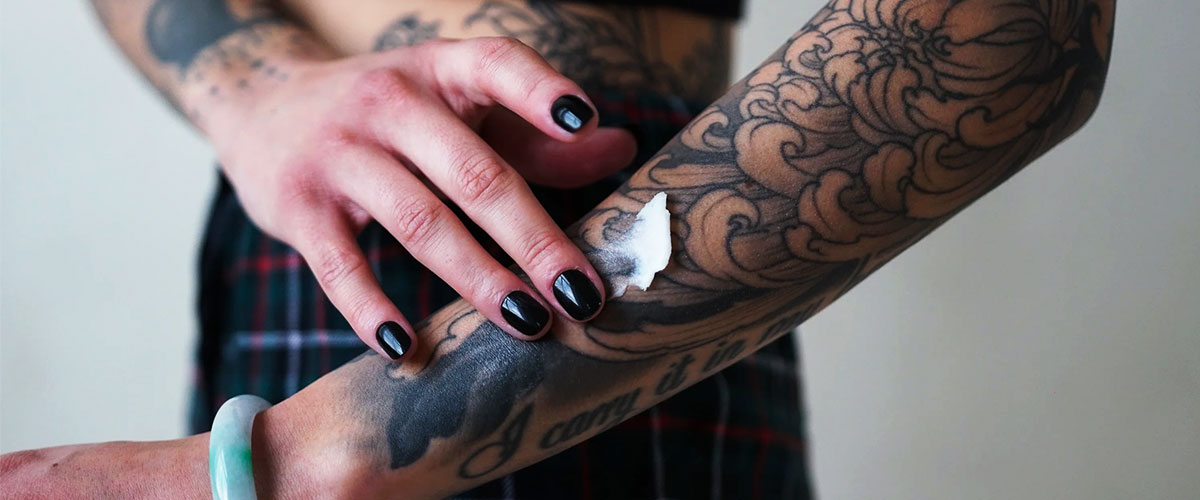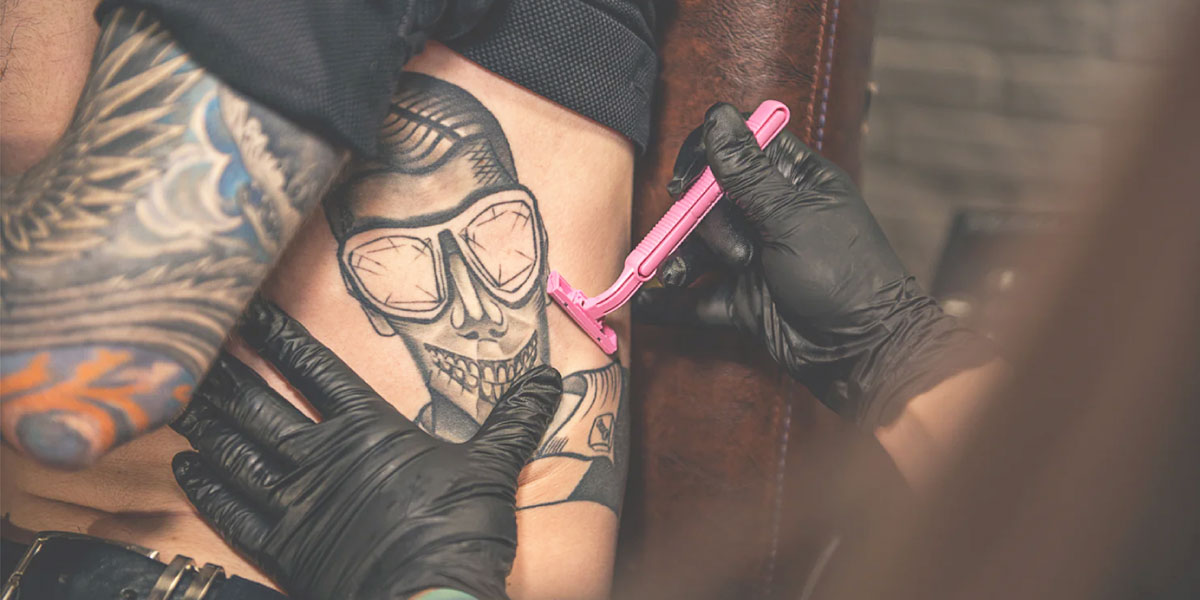Today, I’ve got a question that’s been buzzing in my inbox lately, and it’s a good one: “When can I shave over my tattoo?” If you’re itching to show off your fresh ink with some clean and smooth skin, you’re about to know everything you need!
I’d also like to discuss a paramount aspect of the tattoo journey: the healing process. Because your tattoo adventure doesn’t end when you step out of the studio – it’s just the beginning!
So, in this article, we’ll talk about the stages of tattoo healing and their importance in keeping your tattoo looking flawless for years to come. If you’re curious how long after a tattoo you can shave, just keep reading!
When is it safe to shave over a tattoo?

I’ve had my fair share of tattoos, and I know how tempting it is to wait to shave after the tattoo and to get that fuzz out of the way ASAP. But trust me, the healing process is more than fundamental, and we want your ink to look flawless.
So, when is it safe to shave over a new tattoo? It depends on several factors. First, the size and location of your tattoo matter. If it’s a tiny piece in a less sensitive area, like your forearm, you can start shaving sooner. If it’s a larger design in a more delicate area, like your ribcage, I highly (exclamation point) recommend waiting a bit longer.
Second, the healing stage is key. Generally, it’s wise to give your tattoo at least two weeks to heal completely before you even think about shaving over it. During the initial days, your tattoo is still an open wound, and shaving can introduce bacteria or irritate your skin.
In the following weeks, the skin might flake and peel, which is ok. Once your tattoo is smooth and no longer scabbed, it’s a good sign that it’s ready for a gentle shave.
Steps to safely shave over a tattoo

Step 1: Choose the right razor
When shaving over your freshly inked masterpiece, your choice of razor is necessary. Opt for a clean, sharp, preferably new razor to minimize the risk of irritation and ingrown hairs. I’d recommend a quality multi-blade razor for a close shave. Remember, a dull blade can snag and cause damage to your tattoo, so make sure your blade is in top condition.
Step 2: Prepare your skin and tattoo
Before you start shaving, prepare your skin and tattoo properly. Start by cleansing the area with a mild, fragrance-free soap to remove dirt or residue. This step ensures a clean canvas for shaving without introducing unnecessary irritants to your tattoo.
Step 3: Apply shaving cream
Choose a gentle, hypoallergenic shaving cream, preferably free from harsh chemicals or fragrances. Apply a generous amount to the tattooed area, allowing it to sit for a minute or two. This will soften the hair and create a protective barrier between the razor and your skin.
Step 4: Shave with care
Now, for the moment of truth. Begin shaving toward hair growth, using gentle and even strokes. Avoid pressing too hard or going over the same area multiple times, as this can cause unnecessary irritation. Remember, the goal is to remove the hair while protecting your tattoo.
Step 5: Rinse and moisturize
After successfully shaving over your tattoo, rinse the area with lukewarm water to remove any remaining shaving cream. Pat it dry with a clean, soft towel – no harsh rubbing! Finish off by applying a fragrance-free, alcohol-free moisturizer to keep your skin and tattoo hydrated.
What to avoid when shaving over a tattoo
- Avoid shaving too soon: Shaving before your tattoo is fully healed can damage the fresh ink and lead to infection. Be patient and wait for the green light from your artist.
- Skip the harsh products: Stay away from scented or heavily perfumed shaving creams. They can irritate your skin and potentially cause problems for your tattoo.
- Don’t rush: Shaving over a tattoo requires patience and a steady hand. Take your time, and remember that slow and steady wins the race.
- Avoid over-shaving: Resist the urge to repeatedly go over the same spot. Over-shaving can lead to razor burn and compromise your tattoo’s appearance.
Shaving over your tattoo can be safe and comfortable if you follow these steps and avoid the common pitfalls. Do not repeat my mistakes, and remember, protecting your tattoo is key to maintaining its vibrant appearance for years to come.






